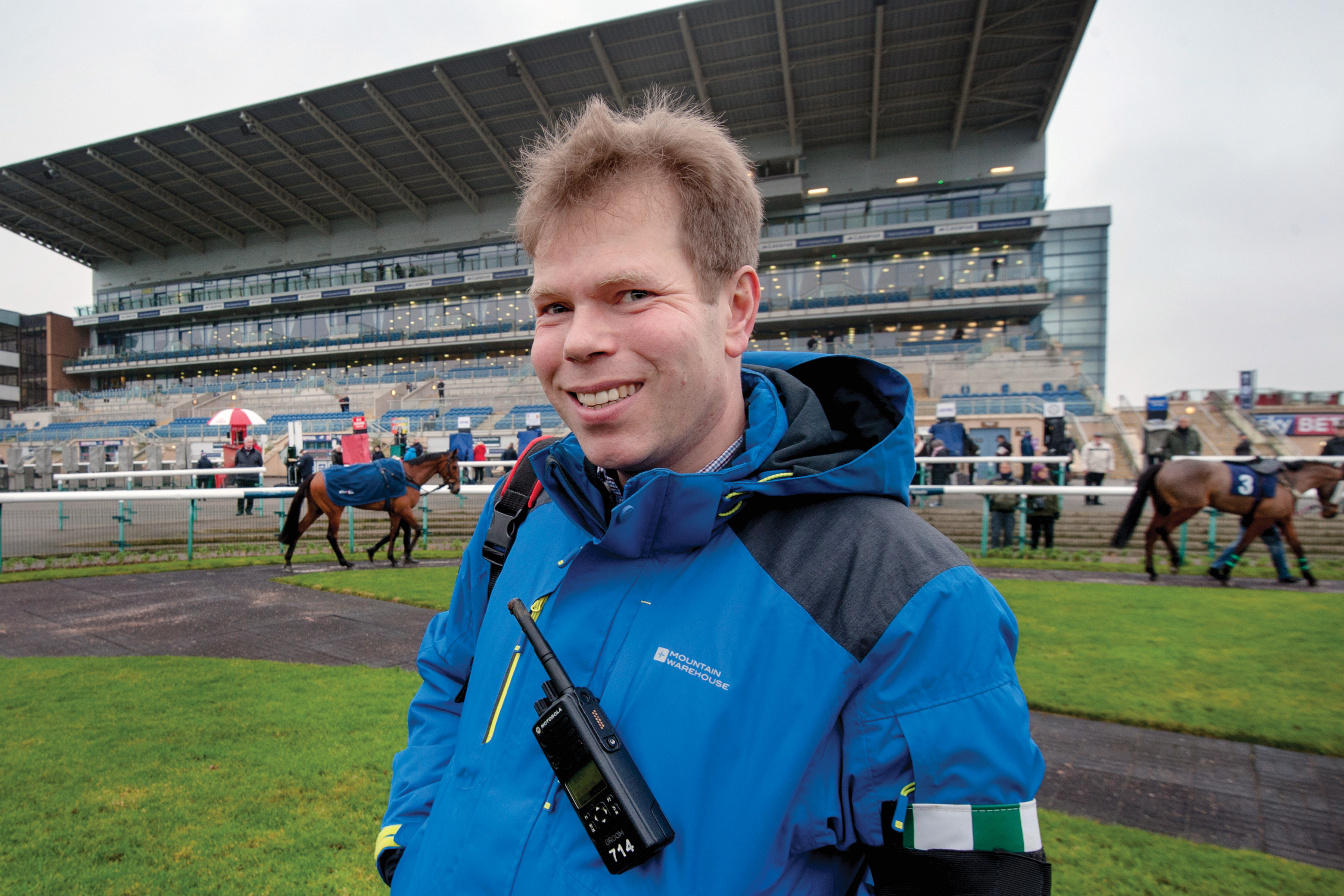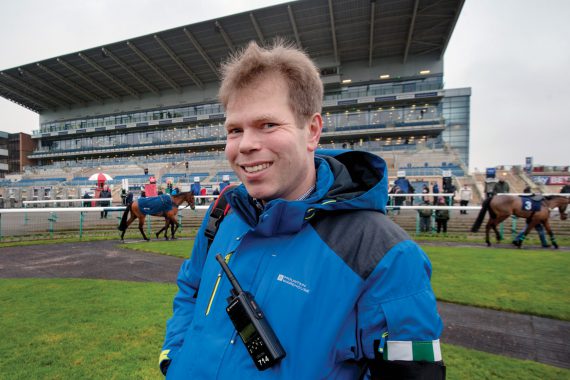Profile: Dr Alastair Dickson

Roles: GP locum; British Horseracing Authority (BHA) doctor; GP clinical adviser to NHS England South Yorkshire and Bassetlaw; health economist
Hours worked: Six to eight GP sessions a week; average one day per month horse racing; two sessions per week as a clinical adviser
Pay for BHA role: Around £60 per race; £400 for a typical race day
13.00 I arrive at Doncaster racecourse. En route to the medical centre I pop in to the weighing room, sign on and collect my radio. As people arrive I’m reminded how friendly and happy the medical team is.
13.20 The senior medical responsible officer runs the medical briefing. We’re allocated a rota so we switch between the paddock, weighing room, the start and the chase cars. Rotating allows you to see all aspects of the meeting and keeps your skills up to date.
I have always been interested in pre-hospital care. Covering events offers a refreshing change from day-to-day GP work. I have the pre-hospital trauma life support qualifications (a prerequisite) from working in motorsport medicine. Unlike in motorsports, however, the BHA provides indemnity cover.
13.30 We head upstairs for lunch with the vets. It’s a chance to relax and catch up. Sometimes my fiancée Fay comes with me, especially if it’s an evening meeting with a concert afterwards.
14.10 I’m at the paddock for the first race. There are lots of excited owners, horses of varying experience full of adrenaline and the general public nearby. The big risk here is from a horse bolting. At Redcar racecourse last year the paddock doctor was called to an unusual situation: a horse in the canteen. Luckily no one was injured, but you have to expect the unexpected.
14.35 I accompany the riders being weighed in after the race. If any have been injured without the medics picking it up, I’m a fail-safe.
14.50 I’m in the chase car for the second race and there’s a faller at the fifth fence. We pull over, attending within a minute (a BHA requirement). It appears to be a simple spill: the rider’s up and swearing, but seems okay. After the race, I examine him for physical injuries and concussion. We use a set of screening questions and a balance test for concussion. Failure on one or both measures means an automatic red flag excluding the rider from racing until they are passed fit again by the BHA medical team. The BHA implemented this in response to widespread concerns over concussion in the medical community, a position respected by the professional riders.
15.20 I’m at the start for the next race. I do a radio check that all ambulances and the other doctor are in position, then inform the starter that we are ready, keeping a close eye as the runners line up in case of injuries. Fortunately, the race starts smoothly; the pressures of TV mean keeping to a tight time schedule.
16.05 The third and fourth races have passed without incident. It’s cold outside and we’ve been working up an appetite. Happily, the vets lead us upstairs for scones and tea.
16.30 I’m chasing again and there’s a faller just before the end of the race. It doesn’t look great. I call for help; my trauma life support training comes to the fore. Working as a team we stabilise the jockey. The mandatory moulage training comes in useful; we’ve practised this. The air ambulance is on its way and the major trauma centre has been alerted. On arrival a pelvic fracture is confirmed; fortunately we later learn the rider is on course to a full recovery.
18.00 Racing has finished, debrief is done, goodbyes are said. I’m on my way home feeling happy and relaxed. I enjoy this as part of my portfolio career. The variation keeps things interesting and I’m always learning. Witnessing many types of accidents first hand allows me to take a better history and visualise what has happened to my GP patients. Often this has enabled me to identify issues such as concussion, or reassure on late-presenting musculoskeletal injuries, which is useful when you work in rural practices. You also feel appreciated when you work at the racecourse. Somehow it feels like the politeness and consideration we used to experience in the ‘old’ NHS.
If you are interested in becoming a BHA doctor, contact Dr Jerry Hill, chief medical adviser for the BHA, [email protected]
Pulse October survey
Take our July 2025 survey to potentially win £1.000 worth of tokens












